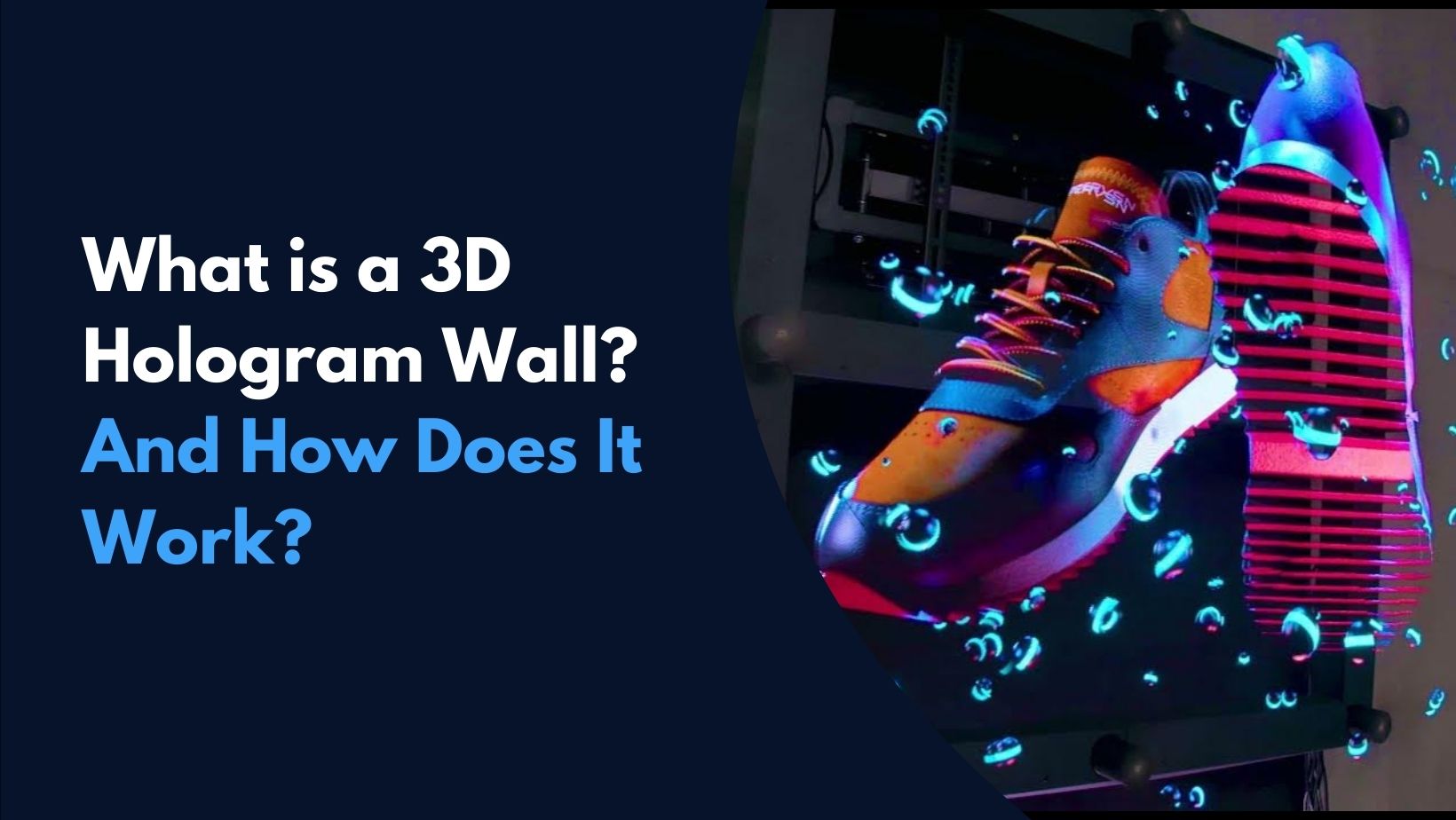In the world of future technologies, few tools can spur the interest and excitement of the viewers like the classic 3D hologram walls. Identify and choose the most suitable holographic display by involving one of the leading holographic display suppliers, Vision 3D. These innovative masterpieces are a sneak peek of what has come in the future where digital media is preserved in structures and the virtual shades of the real. However, what makes the 3D holographic wall? What is its mechanism of action?
3D Hologram Wall Overview
A 3D hologram wall can be defined as a display system projecting volumetric images or animations into an environment to give the spectators an optical impression of depth in three-dimensional space in the context of a show without the use of special glasses or a headset. In contrast to flat screens that practically can only have two planes, that is, width and depth, hologram walls are three dimensional with height added to the width and depth to create an interactivity of some sort of a magic world.
How Does It Work?
The core of a 3D holographic wall is made with integrated synergistic hardware and software for generating holograms of life-like replicas. It starts with designing Virtual Media objects using certain software where objects are developed either in three-dimensional models or animations.
Once the content is ready, it is shown on a blank semi-transparent screen or surface employing various methods namely projection mapping and laser. This holographic glass comprises projected screens that dispense light at a certain angle, and impressions of perspective look like depth. Also, some buildings have hologram walls and these walls may have diffraction gratings or holographic film to make it look even better.
In the holographic display, as audiences begin touching and moving around the holographic images, sensors and cameras record the results as inputs that enable real-time control of the holographic images. This is an interesting feature in a way that enhances its viewers’ participation as opposed to just making them observe passively.
Applications of 3D Hologram Walls
The flexibility of three-dimensional hologram walls furnishes various applications around several agencies.
- Entertainment – With the use of hologram walls in gaming arcades and art installations, it provides entertainment places that are looking for ways to entertain customers in more options and ways and is a very versatile option for those looking to place a lot of money into the structure and design of the place.
- Education – In classrooms and museums, hologram walls can add more value to a lesson by displaying educational information that can be transformed into three-dimensional models allowing the students to have a better view of the information provided in the fields of science, history and many other fields.
- Retail – Retailers can utilize hologram walls to develop mesmerizing screens that present products in 3-dimensions improving the driving sales and shopping familiarities.
- Advertising – From the general perspective of marketing and advertisement, the holographic wall is the first step towards catching the consumer’s eye and creating significant impressions through branding.
Healthcare – In other areas such as hospitals, hologram walls can be employed when training health practitioners, they can manipulate different and real surgical operations as well as analyze different forms of data in tangibility through 3D holography.
Challenges and Limitations
Though 3D holographic glasses grip vast possibilities, they also encounter multiple troubles and restrictions.
- Cost – The conception, design and implementation of a hologram wall can be expensive whereby the technology to develop a competent hologram wall is very costly and thus non-financially feasible.
- Content Creation – Creating content to display on the hologram walls involves designing and developing creative work, which can be quite tricky, given the technical nature of holograms, and therefore not easily done by just anybody.
- Viewing Angle – Most of the time, hologram walls come with restricted viewing access, and the viewers will only be allowed to view the holographic images from specific positions.
Environmental Factors – Issues like natural and artificial lighting or even the reflective characteristics of the surrounding surfaces can have an impact on the effectiveness of the hologram projections, in terms of how easily one can see them and their overall clarity.
Future Outlook
However, the future appears to be bright for the 3D hologram walls as innovation advances bring new horizons in this respect. As display technologies evolve, new content creation tools emerge, and the development of new interfaces continues to progress, even in the next 5 years, holographic walls will become even more immersive and easier to implement.
Conclusion
Therefore, 3D holographic glasses are something exciting in art form combined with the technical possibilities and the experience of the near future when the media comes in 3D format. Despite being still in the experimental phase, hologram walls have a lot of possibilities for their uses, including the uncanny valley, gaming, advertisement, marketing, art therapy, health and many more. The maturity of the technology and a decline in the costs make it possible to anticipate an imminent and active use of hologram walls as an indicator of the trends that govern the use of digital content in physical environments. To know more about holographic displays, connect with Vision3D customer care number – +91-8971953451.
